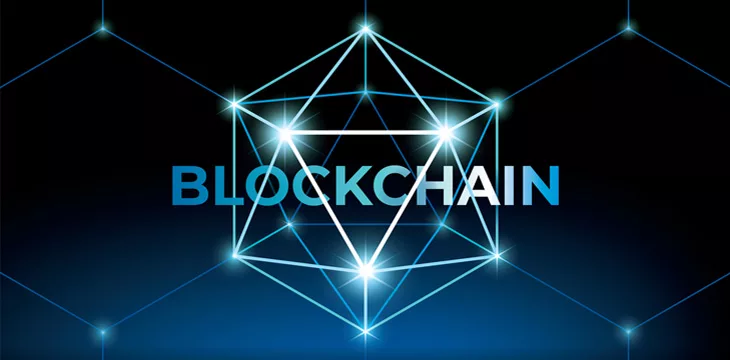Here are some tools to make building on blockchain easier

[gpt3]rewrite
The world is finally waking up to the fact that blockchains are powerful tools on which we can build world-changing applications. It is also slowly starting to find out that many of the well-known blockchains, such as Ethereum, cannot be scaled to allow enterprise-based solutions to be built using that network.
In this article, we’ll discuss some of the challenges associated with building on the blockchain, we’ll highlight some tools that make it easier to do so, and we’ll tell you how you can find out more at the upcoming London Blockchain Conference.
What are the challenges associated with building on blockchains?
Identify problems – One of the most important problems associated with building on blockchains is identifying problems to be solved. Unfortunately, thanks to the speculative frenzy in the industry over the last decade, attention has been focused on token prices and speculation fueled by dark pools of money on platforms like Binance.
But as the gold rush mentality dies down, real issues are starting to get the attention they’ve been getting. Industry leaders, governments and entrepreneurs are realizing that blockchain technology can solve long-standing problems with supply chains, data integrity, legacy financial systems and much more.
Scaling – The original Bitcoin protocol was always infinitely scalable, and Satoshi Nakamoto said so himself when he told developer Mike Hearn that it could already surpass Visa-level transaction capacity when he released it. Unfortunately, this idea has been suppressed and drowned out by vested interests who realized that there is a lot of venture capital to be had in building scaling solutions for broken blockchains.
Thanks to solutions like Teranode, the original Bitcoin is scaling to the levels Satoshi envisioned, with tens of millions of on-chain transactions processed daily.
Integration with legacy systems – While blockchain technology has been around for well over a decade now, and its predecessors much longer than that, it is still a relatively new technology, and there will be clear challenges in integrating it with the older systems many businesses and governments run on.
For example, the UK’s NHS computer system is notoriously out of date, and projects trying to fix it regularly hit brick walls. Integrating a system like this with blockchain technology will have many benefits, but there is no doubt that it will also present significant challenges.
Ease of use and user experience – To its credit, Ethereum was the first blockchain that made it relatively easy and simple for developers to build on it. Solidity’s simple language and well-organized documentation made it easy for even new developers to get started.
Unfortunately, Ethereum is not scalable, so all the world-class tools in the world won’t help. Blockchains like Bitcoin SV are catching on quickly with excellent documentation and the tools we’ll discuss next, making life easier for future and existing developers.
What are some useful tools for building on Bitcoin SV?
There is an ever-growing list of useful tools to make it easier to build on the world’s most scalable utility blockchain. From token protocols to transpilators and Turing complete smart contract languages to teams of people who will simply bring an idea to life for you, things are finally getting easier for BSV developers.
LiteClient/ SPV – Satoshi Nakamoto described Simple Payment Verification (SPV) in the Bitcoin White Paper. In it, he explains how a light client can verify transactions without downloading the entire Bitcoin blockchain.
It is possible to verify payments without running a full network node. A user only needs to keep a copy of the blockheads of the longest proof-of-work chain, which he can obtain by querying network nodes until he is convinced that he has the longest chain, and obtain the Merkle branch that connects the transaction of the block it is timestamped. He cannot check the transaction himself, but by linking it somewhere in the chain, he can see that a network node has accepted it, and blocks added after it further confirm that the network has accepted it. (Nakamoto, 2008, p. 5)
Thanks to the hard work of developers at the BSV Blockchain Association and others, LiteClient is now a reality. In short, it requests the Merkle branch of a given transaction from a BSV full node and verifies that the transaction is included in a block. This means that SPV clients can operate with far fewer computing and storage resources than full node operators require.
Indexing services such as Jungle Bus serve a similar purpose, allowing applications to filter the transactions they need without running a full node.
sCrypt – Bitcoin SV supports Bitcoin Script natively. It is mostly used to specify conditions that must be met in order to spend Bitcoins, but some developers have complained that it is limited and challenging to use.
Fortunately, BSV developers can now use sCrypt, an easy-to-use, high-level smart contract language. It is fully Turing-complete, extremely user-friendly, and has a similar syntax to Javascript and Solidity, making it easier to develop on BSV.
In addition to sCrypt, there are now several SDKs for developers using Python, Javascript, C++ and other languages, enabling them to interact with the BSV blockchain more easily.
Magic Dapp – VX Technologies recently announced the first ‘no code’ tool for developers on the BSV blockchain; Magic Dapp. This drag-and-drop style tool makes it extremely easy and straightforward to create applications, custom databases and other tools on BSV, even for non-coders.
This has revolutionary implications, making the power of the blockchain available to anyone, anywhere. For more complex projects, VX Technologies offers Alpha Dapp, which is essentially a “done for you” service where its team of experts can help bring any project to life.
This is just a small overview of some tools available to build on the most powerful blockchain. Many others, including a suite of tools from Gate2chain, Vaionex Corporation, TAAL and others, make it easy to tokenize assets on the blockchain, track and process transactions, and build custom applications.
Learn more at the London Blockchain Conference
If you are interested in learning more about the visionary developers and entrepreneurs building on the blockchain, you must attend the London Blockchain Conference from May 31st to June 2nd. Taking place at the QEII Center in the heart of the city, it really looks set to be an unmissable event.
As well as panels hosted by actor Ben McKenzie and a demonstration of how a gold exchange should work by legendary financial commentator and investor Peter Schiff, the London Blockchain Conference will be packed with entrepreneurs and developers who will show, explain and demonstrate how building on the blockchain happens now.
If you want to reserve your free ticket to the world’s largest blockchain conference to mix and mingle with the leading minds in the industry, visit the London Blockchain Conference website today!
Watch: London Blockchain Conference VIP Dinner: Showcasing real-world solutions powered by blockchain
New to Bitcoin? Check out CoinGeeks Bitcoin for beginners section, the ultimate resource guide for learning more about Bitcoin – originally envisioned by Satoshi Nakamoto – and blockchain.
[gpt3]

























